Elgg is a free, open-source, highly customizable web framework and CMS designed to create online social environments. Written in PHP and utilizing MySQL as a database backend, Elgg offers a straightforward and user-friendly interface, allowing beginners to easily manage content via a web browser. It is a powerful tool for schools, colleges, and universities to establish their own social network on campus, making Elgg one of the most versatile social networking engines available.
This guide will walk you through the process of installing Elgg with Nginx and securing it with Let’s Encrypt SSL on Ubuntu 22.04.
Prerequisites
- A server running Ubuntu 22.04.
- A valid domain name pointed to your server’s IP address.
- A configured root password on the server.
Getting Started
Begin by updating the system packages to their latest versions. Run the following command to update all packages:
apt-get update -y
After updating, you can proceed to the installation steps.
Install Nginx, PHP, and MariaDB
Ensure that Nginx, MariaDB, PHP, and the necessary PHP extensions are installed. Use the following command to install them if they are not already present:
apt-get install nginx mariadb-server php php-cli php-fpm php-json php-pdo php-mysql php-zip php-gd php-mbstring php-curl php-xml php-pear php-bcmath unzip curl -y
After installation, edit the PHP configuration file to adjust some default settings:
nano /etc/php/8.1/fpm/php.ini
Modify the following parameters according to your needs:
memory_limit = 256M post_max_size = 64M upload_max_filesize = 32M date.timezone = UTC
Save and close the file, then restart the PHP-FPM service to implement the changes:
systemctl restart php8.1-fpm
Configure MariaDB Database
Next, create a database and user for Elgg. Log in to MySQL using the command:
mysql
Once inside, execute the following commands to create a database and a user:
CREATE DATABASE elggdb; CREATE USER elgguser@localhost IDENTIFIED BY 'securepassword';
Grant all privileges to the newly created Elgg database:
GRANT ALL PRIVILEGES ON elggdb.* TO elgguser@localhost;
Flush the privileges and exit MySQL:
FLUSH PRIVILEGES; EXIT;
The MariaDB database and user are now set up for Elgg. Proceed to the next step.
Install Elgg on Ubuntu 22.04
Download the latest version of Elgg from the official GitHub repository using the command:
wget https://github.com/Elgg/Elgg/releases/download/4.2.3/elgg-4.2.3.zip
Extract the downloaded archive with:
unzip elgg-*.zip
Move the extracted files to the Nginx web root directory:
mv elgg-4.2.3 /var/www/html/elgg
Create a data directory and adjust ownership and permissions as follows:
mkdir /var/www/html/data chown -R www-data:www-data /var/www/html/elgg/ chown -R www-data:www-data /var/www/html/data chmod -R 755 /var/www/html/elgg
Elgg is now positioned in the Nginx web root directory. Continue to the next step.
Create an Nginx Virtual Host for Elgg
Configure a virtual host in Nginx to serve Elgg over the internet. Create the configuration file using:
nano /etc/nginx/conf.d/elgg.conf
Add the following content:
server {
listen 80;
server_name elgg.example.com;
root /var/www/html/elgg;
index index.php;
access_log /var/log/nginx/elgg_access.log;
error_log /var/log/nginx/elgg_error.log;
location / {
try_files $uri $uri/ /index.php?$query_string;
}
location ~ \\.php$ {
fastcgi_index index.php;
fastcgi_split_path_info ^(.+\.php)(.*)$;
fastcgi_keep_conn on;
fastcgi_pass unix:/var/run/php/php8.1-fpm.sock;
include /etc/nginx/fastcgi_params;
fastcgi_param SCRIPT_FILENAME $document_root$fastcgi_script_name;
}
}
Save and exit the file, then verify the Nginx configuration with:
nginx -t
Should the output confirm the configuration is correct, restart Nginx to apply changes:
systemctl restart nginx
You can also verify Nginx’s status by running:
systemctl status nginx
Access Elgg Web Interface
With Elgg installed and configured with Nginx, you can access it in your web browser using the URL http://elgg.example.com. This will bring up the Elgg welcome page:
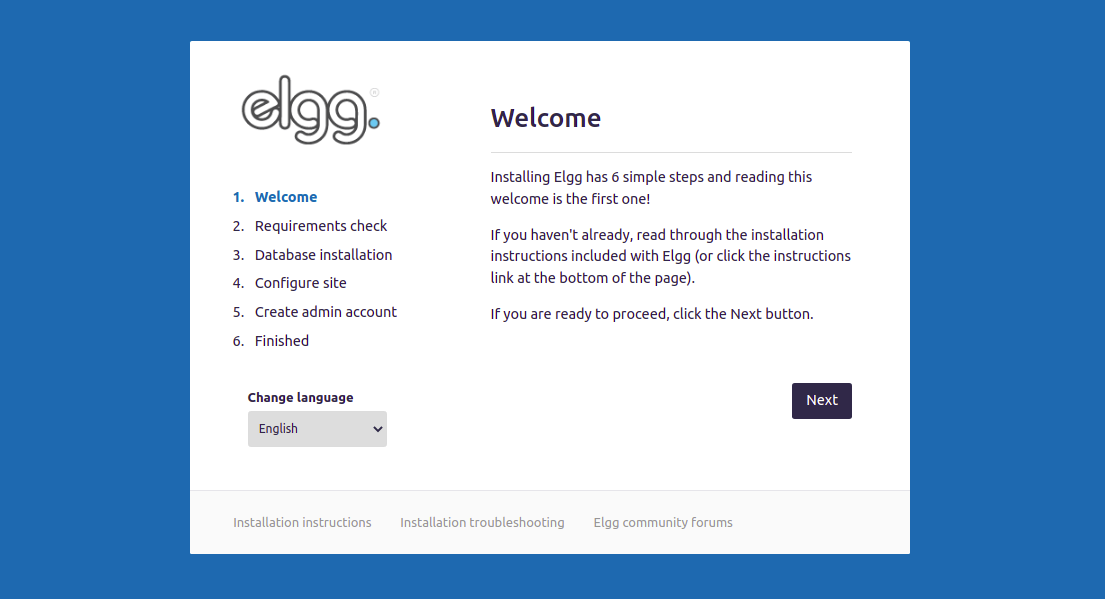
Click on the Next button to proceed to the PHP requirements check page:
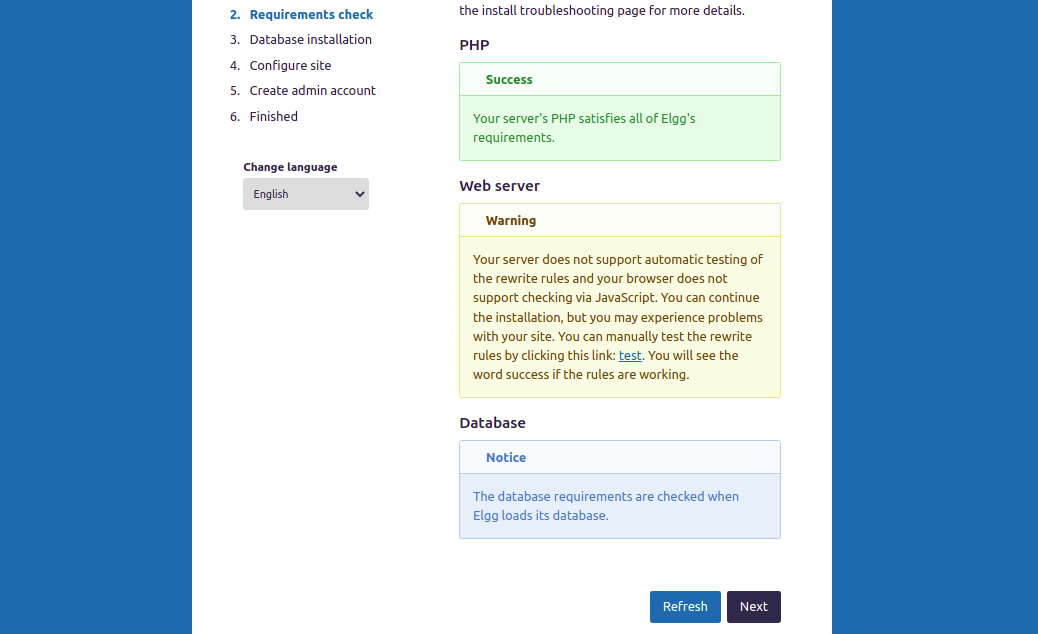
After confirming all requirements, move forward to the database configuration step:
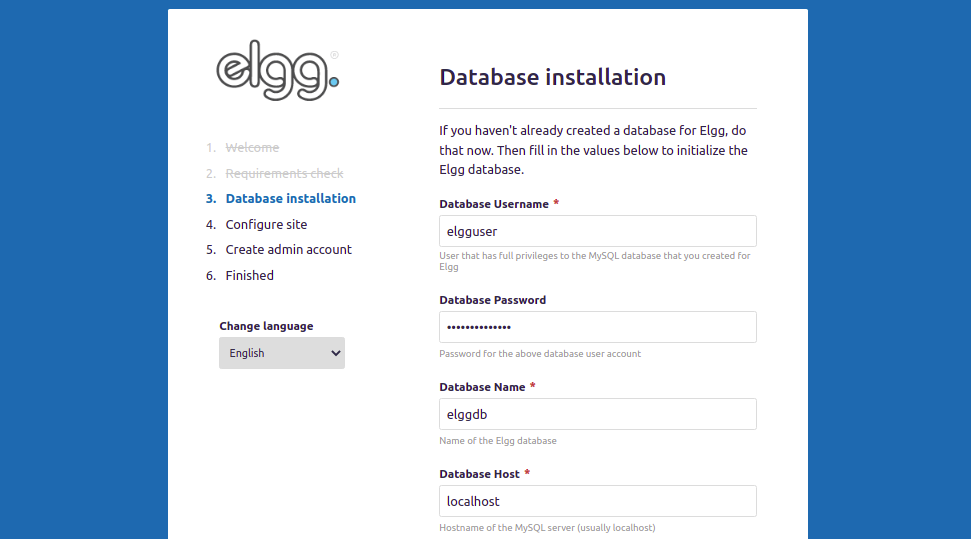
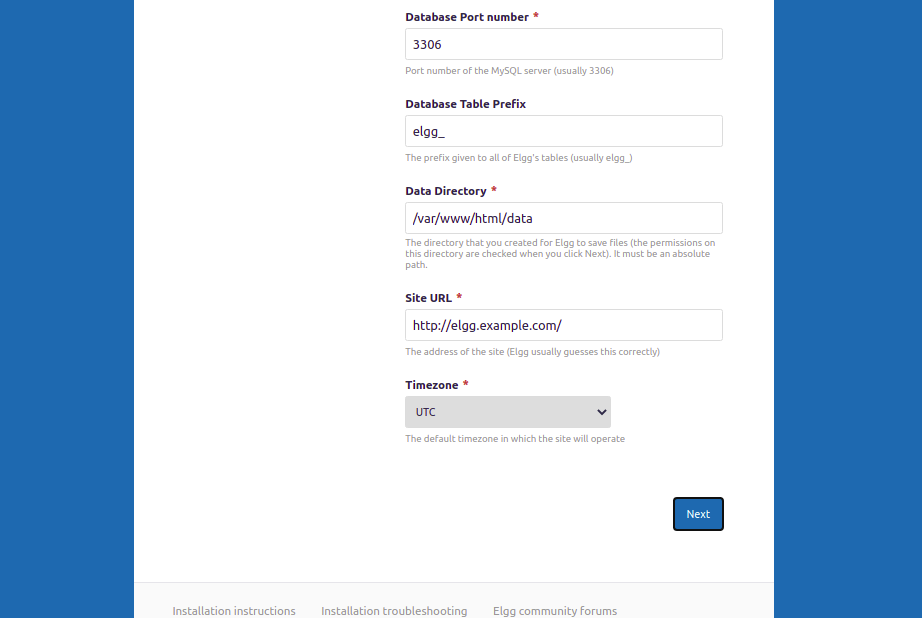
Input your database details, data directory path, and site URL. Click Next to reach the site configuration page:
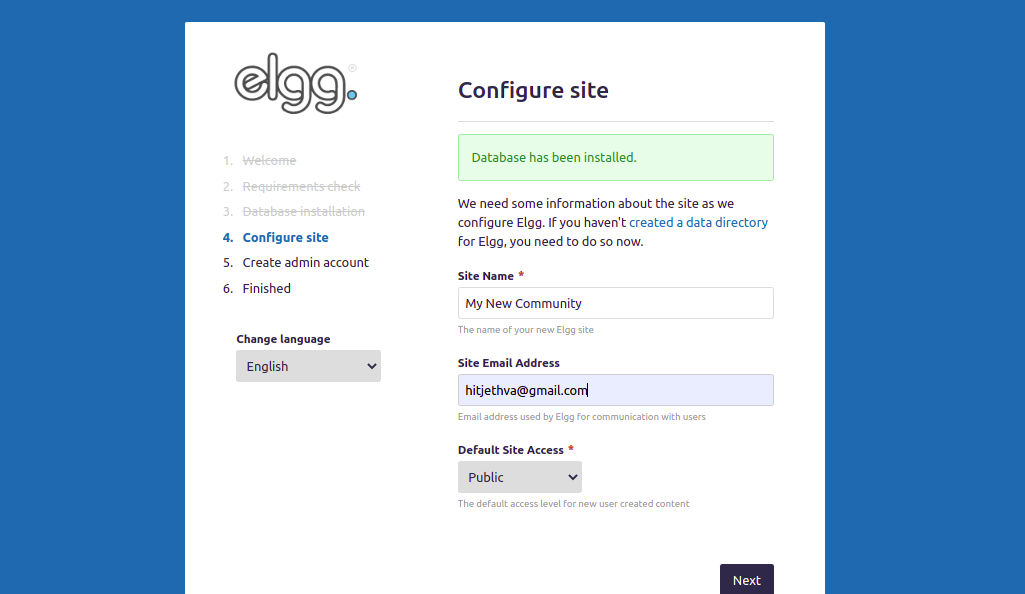
Once your site settings are submitted, advance to the creation of an Elgg admin user:
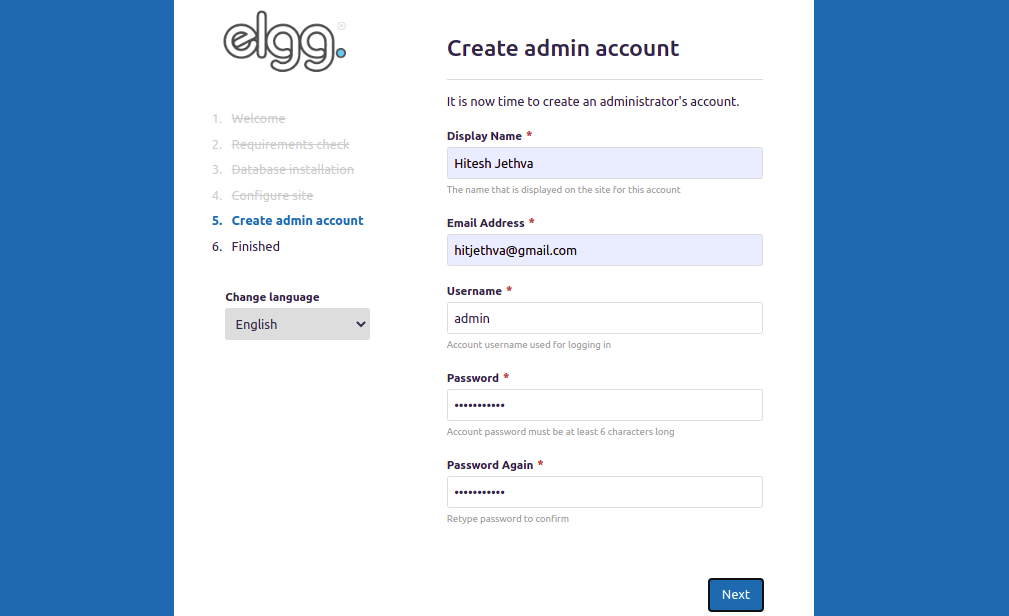
Fill in the credentials for your admin user and click Next. When finished, you’ll see the following confirmation:
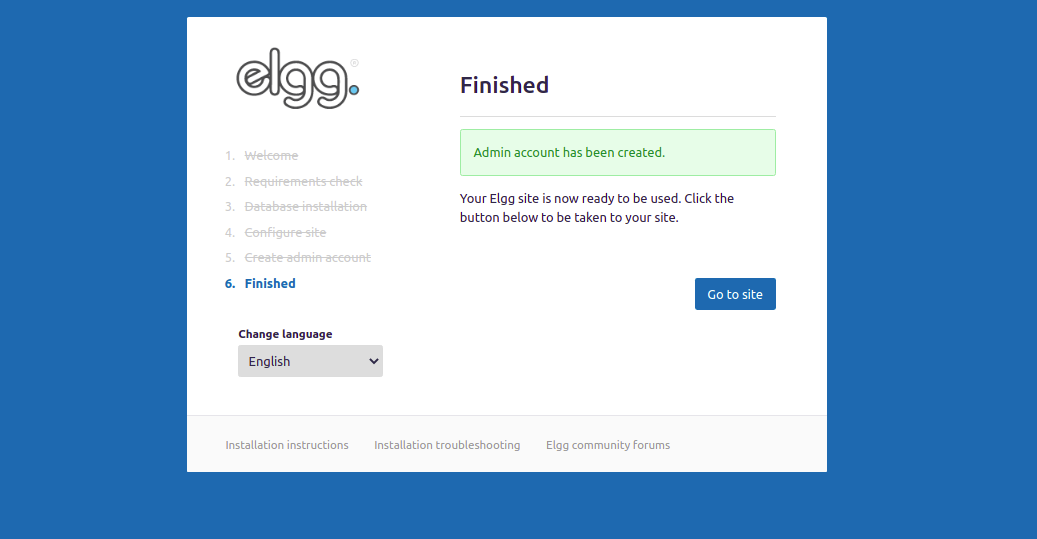
Proceed by clicking on Go to site to access the Elgg dashboard:
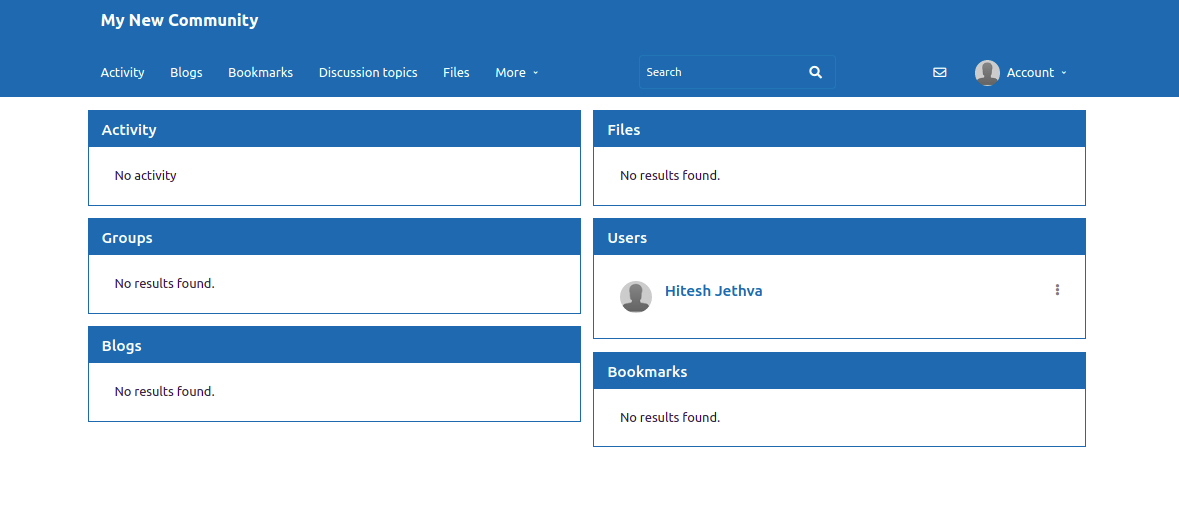
Enable Let’s Encrypt SSL on Elgg
To secure your Elgg website, install the Certbot Let’s Encrypt client:
apt-get install python3-certbot-nginx -y
Next, apply Let’s Encrypt SSL using:
certbot --nginx -d elgg.example.com
Enter a valid email address and agree to the terms of service when prompted:
Saving debug log to /var/log/letsencrypt/letsencrypt.log Plugins selected: Authenticator nginx, Installer nginx Enter email address (used for urgent renewal and security notices) (Enter 'c' to cancel): you@example.com - - - - - - - - - - - - - - - - - - - - - - - - - - - - - - - - - - - - - - - - Please read the Terms of Service at https://letsencrypt.org/documents/LE-SA-v1.2-November-15-2017.pdf. You must agree in order to register with the ACME server at https://acme-v02.api.letsencrypt.org/directory - - - - - - - - - - - - - - - - - - - - - - - - - - - - - - - - - - - - - - - - (A)gree/(C)ancel: A - - - - - - - - - - - - - - - - - - - - - - - - - - - - - - - - - - - - - - - - Would you be willing to share your email address with the Electronic Frontier Foundation, a founding partner of the Let's Encrypt project and the non-profit organization that develops Certbot? We'd like to send you email about our work encrypting the web, EFF news, campaigns, and ways to support digital freedom. - - - - - - - - - - - - - - - - - - - - - - - - - - - - - - - - - - - - - - - - (Y)es/(N)o: Y Obtaining a new certificate Performing the following challenges: http-01 challenge for elgg.example.com Waiting for verification... Cleaning up challenges Deploying Certificate to VirtualHost /etc/nginx/conf.d/elgg.conf
When prompted whether to redirect HTTP traffic to HTTPS, choose the appropriate option:
- - - - - - - - - - - - - - - - - - - - - - - - - - - - - - - - - - - - - - - - 1: No redirect - Make no further changes to the webserver configuration. 2: Redirect - Make all requests redirect to secure HTTPS access. Choose this for new sites, or if you're confident your site works on HTTPS. You can undo this change by editing your web server's configuration. - - - - - - - - - - - - - - - - - - - - - - - - - - - - - - - - - - - - - - - - Select the appropriate number [1-2] then [enter] (press 'c' to cancel): 2
Upon completion, the output should confirm success:
Redirecting all traffic on port 80 to ssl in /etc/nginx/conf.d/elgg.conf - - - - - - - - - - - - - - - - - - - - - - - - - - - - - - - - - - - - - - - - Congratulations! You have successfully enabled https://elgg.example.com You should test your configuration at: https://www.ssllabs.com/ssltest/analyze.html?d=elgg.example.com - - - - - - - - - - - - - - - - - - - - - - - - - - - - - - - - - - - - - - - - IMPORTANT NOTES: - Congratulations! Your certificate and chain have been saved at: /etc/letsencrypt/live/elgg.example.com/fullchain.pem Your key file has been saved at: /etc/letsencrypt/live/elgg.example.com/privkey.pem Your cert will expire on 2022-10-19. To obtain a new or tweaked version of this certificate in the future, simply run certbot again with the "certonly" option. To non-interactively renew *all* of your certificates, run "certbot renew" - Your account credentials have been saved in your Certbot configuration directory at /etc/letsencrypt. You should make a secure backup of this folder now. This configuration directory will also contain certificates and private keys obtained by Certbot so making regular backups of this folder is ideal. - If you like Certbot, please consider supporting our work by: Donating to ISRG / Let's Encrypt: https://letsencrypt.org/donate Donating to EFF: https://eff.org/donate-le - We were unable to subscribe you the EFF mailing list because your e-mail address appears to be invalid. You can try again later by visiting https://act.eff.org.
Conclusion
Congratulations! You have successfully installed Elgg with Nginx and secured it with Let’s Encrypt SSL on Ubuntu 22.04. With this setup, you can now create a social networking platform tailored to your school, college, or university. If you have any questions, feel free to ask.
FAQ
- What is Elgg?
Elgg is an open-source web framework and content management system for building social networking platforms. - Why should I use Nginx instead of Apache?
Nginx is known for its high performance, scalability, and efficient handling of high-volume traffic, making it an excellent choice for serving a social networking site like Elgg. - How often should I update Let’s Encrypt SSL certificates?
Let’s Encrypt SSL certificates are valid for 90 days. It is recommended to renew them every 60 days to avoid unexpected expirations. - Can I use other databases instead of MariaDB?
Elgg typically uses MySQL/MariaDB, but it may support other databases via plugins. However, using MySQL or MariaDB is recommended for optimal performance and compatibility.